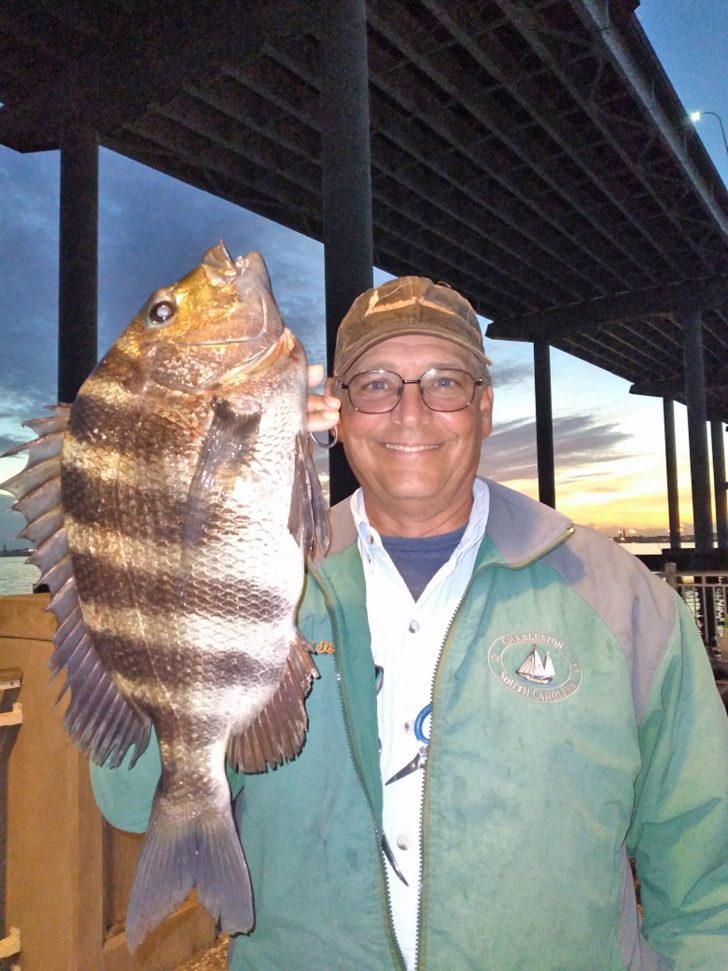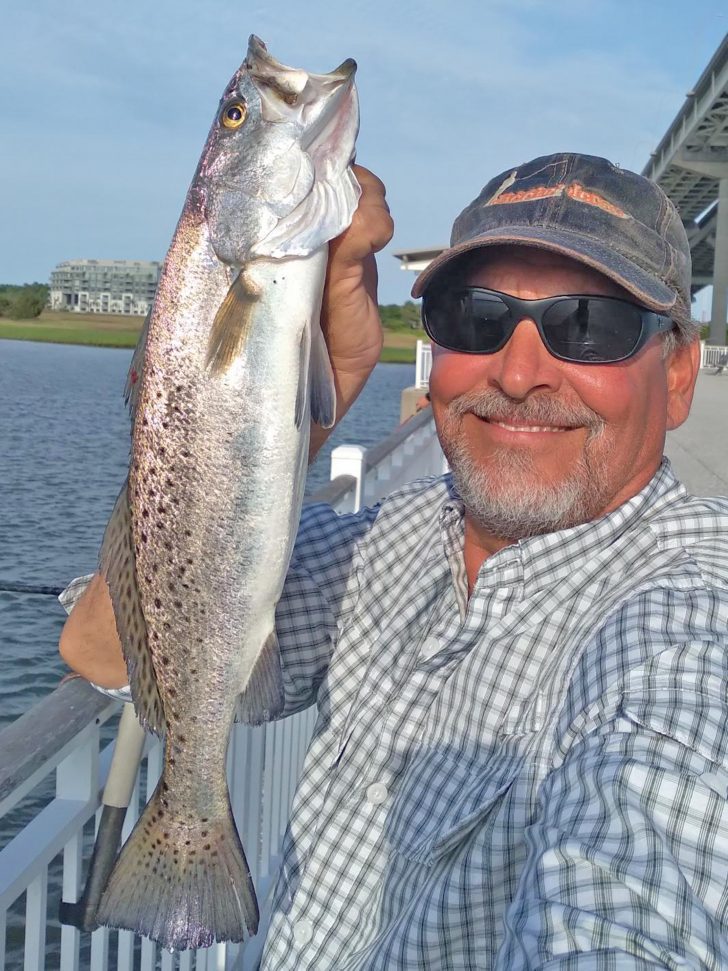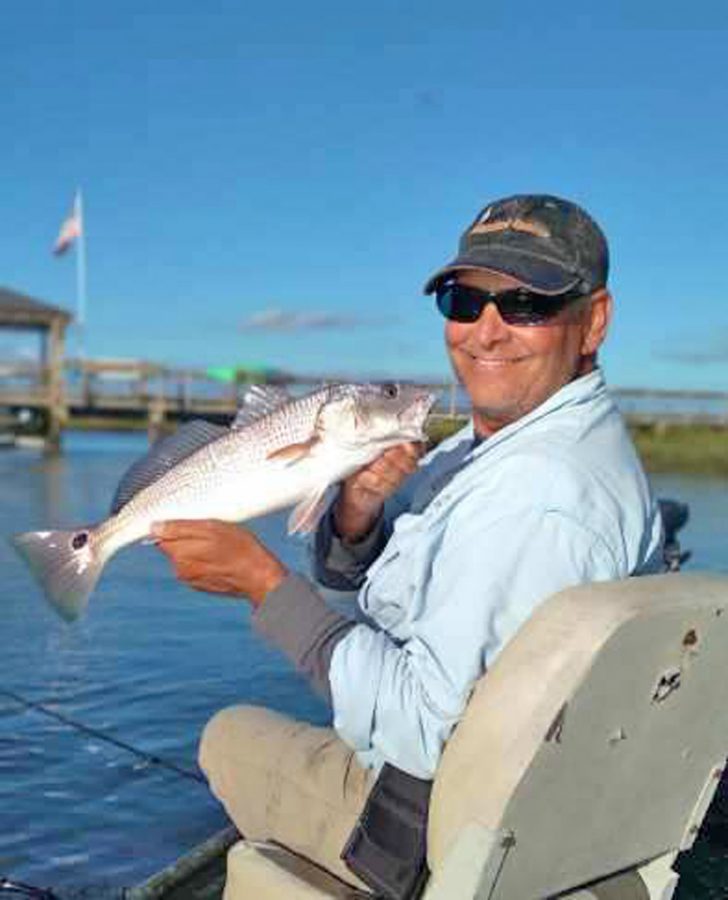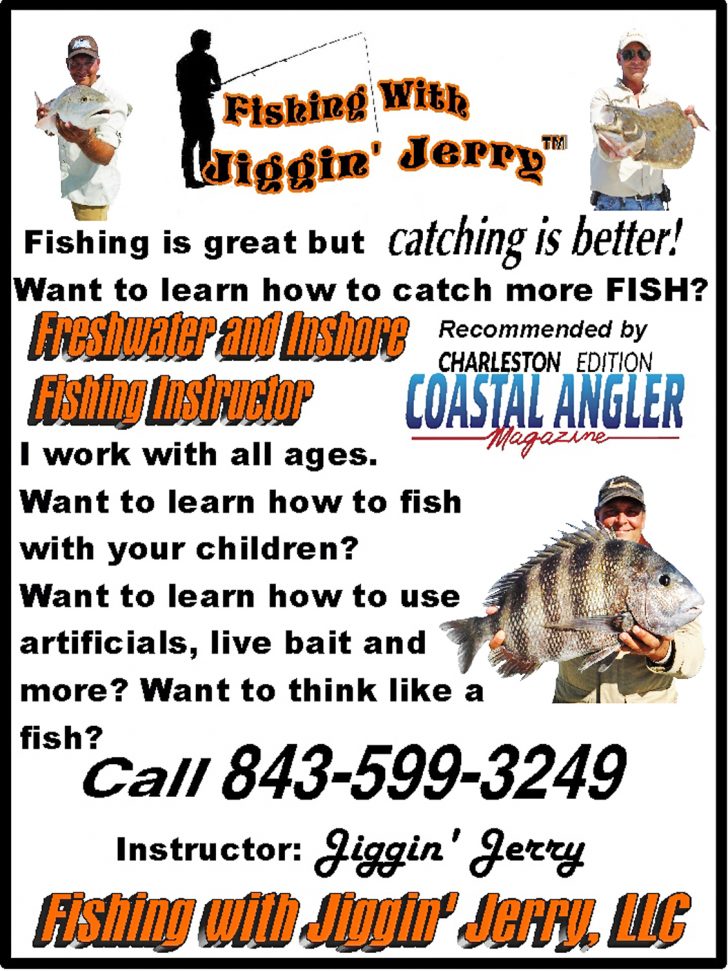Focus On Fishing | Jiggin Jerry
When it comes to inshore fishing, whether you are targeting Red Drum, Spotted Seatrout, Flounder, or what is becoming a favorite, Sheepshead, the one thing that happens through the seasons that keeps inshore fishing exciting is changing your techniques and tackle to better tackle the changes in the feeding habits and actions of these inshore species.
Now that we have moved into winter here in the Lowcountry, the water temperature has gotten cold, and what happens when water gets cold, the fish slow down. Some species of fish will move out to sea in search of deeper and warmer waters.
This helps when targeting some species like Sheepshead. With a lot of the smaller pesky fish out of their way, it becomes easier to keep your bait in front of these tedious, sneaky, crustacean-eating ninjas.
My favorite baits when moving into winter for Sheepshead are Clams out of the shell, Oysters out of the shell, Barnacles and whole Mussels. For tackle,
I always recommend an Octopus style hook, either in size 4, 2 or 1, tied onto a Carolina rig. You can change the length of your fluorocarbon according to how you want to fish your bait, and you can change your egg weights depending on the water conditions you are fishing in.
Spotted Seatrout—schools of young males will group up in deeper holes, usually right outside the entrance of tributaries waiting for the water flow to bring small fish and Shrimp and other bait out of or into the creeks.
This is a time of year when anglers love to use artificials, but what artificials and tackle are best?
Like I mentioned above, these fish move slower in the winter, conserving their energy, but when hooked, fight vigorously, so you would want to slow down your presentation.
Paddle Tail Grubs and Curly Tail Grubs are quite effective this time of year. Drop down deep into the hole and slowly raise up with a couple of short, sharp twitches before re-dropping. You’ll find that a lot of these speckled beauties will grab right off the bottom.
Artificial Shrimp are a winter favorite, tossed out and allowed to sink. If there is a current, let the current push the Shrimp along the bottom as you slowly reel in the slack in your line, again, occasionally, giving a small twitch to the Shrimp just creating a visual effect that says to the Trout, “Hi! I am here!”
A popping cork will also become some needed tackle for locations that have a lot of structure on the bottom like Oyster beds and other debris that constantly tangle you up.
Use the popping cork with your artificials, either the Shrimp, the Paddle Tails or the Curly Tails, tie the length of your fluorocarbon to your cork to the estimated length you will need just to keep your bait over the debris and in the strike zone, either popping the cork every now and then, or just allow a slow drift.
Don’t forget, if you can get them, live Mud Minnows, either under the cork or on a small Carolina rig, work great this time of year.
Red Drum and Flounder—all of the techniques above can be used to catch Flounder and Red Drum, including all the tackle mentioned above, but finding the Red Drum and Flounder is the key to our cold season.
If you have a flats boat or kayak, you can find larger Red Drum grouped up in pools of warmer water in the marshes.
These pools can be spotted during low tides, locations in the swamp grass that still hold a large amount of shallow water that heats up during the day’s sunlight. The groups of Reds will congregate in the pools and enjoy their warmer location until the tide moves back in.
Anglers love to target them when they are trapped in these pools, but this is a time of year when you can find a lot of slot-size Red Drum, meaning eating size, here in South Carolina that is 15 to 23 inches.
One of my favorite baits for them this time of year is frozen Shrimp on a small Carolina rig, but you don’t find these slot-size Reds out in the open or in these deep pools hanging out with the young Trout, you will find them around structure, like docks or piers in big piles of debris.
Flounder are another story. In the Lowcountry, we have two popular species of Flounder, the Southern Flounder and the Summer Flounder.
The Summer Flounder is a larger Flounder and usually after November, the Summer Flounder will move out to sea during our cold months and come back in around March, hence the word Summer Flounder. But our Southern Flounder stays year round.
Now I am not saying you can’t catch a Summer Flounder during the winter because I have done so myself on plenty of occasions, but to find your winter Flounder is the key.
You want to look for muddy banks, starting out off the edge of the grass with a short Oyster bed, then the bottom slowly moving into the water with a smooth muddy appearance.
Flounder are ambush predators and they love to flutter themselves into the mud and lay flat in the soft mud just off the banks and Oyster beds.
Flounder are smart and they know that during the tide changes or even during the stalls that bait like Shrimp and small fish will have to come down the bank line just over their heads or during a low tide on a sunny day when the water is warmer towards the shallow edge of the grass.
The Shrimp and smaller fish will congregate trying to take advantage of the temperature. This will allow the Flounder to pop off the bottom and grab any of them that are in range, so throwing a live Mud Minnow on a Carolina rig or tossing an artificial Shrimp or Paddle Tail or Curly Tail Grub should do the trick.
I hope this helps you tackle some of your winter inshore fishing.
I would like to shout out a special thanks to Sam Buckareff, Editor and Owner of Charleston Edition of the Coastal Angler Magazine for a number of years.
Sam has strived to bring articles and advertisements of interest to the public to benefit them in all their angler needs, whether it be articles of conservation, fishing tips of the month, or the charter you have been wanting to go on, etc.
It gave anglers the opportunity to reach down, grab a magazine and have a day of fishing at their fingertips. Thanks, Sam. We appreciate all your efforts and hard work to make a day on the water brighter for all of us.
Until next time, good luck out there and have fun fishing!
To view some fishing adventures, go to my YouTube Channel Fishing With Jiggin Jerry.
Follow me on Facebook Fishing with Jiggin Jerry.
You may also enjoy reading
Where Can I Fish in Charleston, SC Without a Boat?
Float Your Way To Fishing Success
How To Use Vudu Shrimp – Keep It Poppin’
Artificial Intelligence – Tools Of The Trade
Becoming a Puppeteer Fisherman










